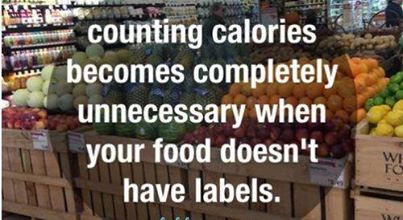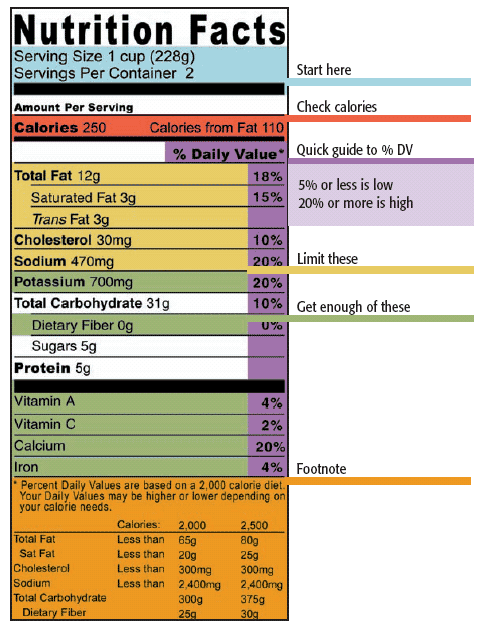Massage Heights’ philosophy has evolved into much more than providing therapeutic services, it’s about being part of a larger wellness movement focused on helping people achieve balanced and healthy lifestyles. Enjoy this month's blog from our newest contributor, Shannon!

Knowledge is power. We grew up hearing those three words and chances are we tell our kids the same thing. We pass those words along because they’re true but it’s especially true when making healthy choices for yourself and your family.
Manufacturers have perfected the art of making a product (especially a boxed one) look attractive. Did you know manufacturers tend to use green on the front of labels because consumers often associate the color green with healthful choices? You want more truth? The best purchases at the grocery stores don’t have labels. Need to see how many total fat grams are in that apple? Nope, you sure don’t. How about how many total ingredients or which ingredient comes first in that bag of salad? Nope, not necessary. You get the idea. BUT, realistically the majority of our purchases do have labels and we need to know how to read them.
Nutrition Label Crash Course:
First things first - Determine how much is in a serving and how many servings are in the package. All the information listed on the label is based on ONE serving, not the entire box (unless there’s only one serving in a package).
Understand that the Percent Daily Value (%DV) is based on the Recommended Daily Allowance (RDA) for adults. You may need more or less and your children definitely have different calorie, protein and vitamin needs - don’t make a decision to purchase an item solely on % DV. If you want to know more about the specific calorie and protein needs for you or your family, consider working with a registered dietitian!
Tips & Tricks (not in any particular order)
- Mono-unsaturated fats (think olive oil) are “heart healthy” fats while trans-fat (think baked goods) should be kept to a minimum.
- The less saturated-fat, trans-fat, cholesterol & sodium the better- you may find this is hard to do with packaged items.
- Look at the fiber- choose grains /breads with at least 3g of fiber per serving.
- When looking at total carbohydrate, the less sugar the better.
- If comparing two items, choose the one with fewer ingredients.
- Pay attention to where sugar falls on the ingredient list - ingredients are listed by predominance, so the farther down on the list, the better.
- When looking for sugar in a list, keep your eyes peeled for high-fructose corn syrup or any ingredient with an “-ose” at the end which usually means sugar
- Organic or gluten-free doesn't mean lower calorie or healthy - still read the entire label to determine total calories, fat grams, etc.
Sometimes the real thing is better - if purchasing a low-fat item, there is probably more sugar or sodium. If purchasing a low-sodium item, there is probably more fat. The takeaway message is to learn discipline and enjoy the appropriate portion size instead of over-indulging in a “light” option.
Navigating the Grocery Aisles: Are you Hungry?
Don’t go to the grocery store hungry! A successful trip to the grocery store draws on both knowledge and preparation.
Prepare yourself for a grocery shopping trip by:
- Making a list & organizing your coupons.
- Reading the store’s weekly advertisement.
- Eat a light snack to avoid hunger while shopping - we all can remember a time when we “bought everything in the store because we were starving.”
Arm yourself with the following knowledge of the major grocery sections:
Produce- Shop in season for the best freshness and price.
- Choose a variety of colors.
- Non- organic is better than no produce at all!
- Know your clean-fifteen and dirty dozen.
- Look for lean cuts of beef & poultry; plan on trimming visible fat.
- Compare % fat in ground meats; choose 90% lean or greater.
- Choose seafood at least twice per week.
- Choose wild-caught salmon for higher omega-3s.
- Choose low-fat varieties.
- Choose Greek yogurt for higher protein.
- Low-fat cottage cheese is an excellent protein source.
- Try milk alternatives such as almond, soy & coconut for added beverage variety but still pay attention to total calories, fat & sugar content.
- Always check expiration dates!
Deli & Bakery
- Choose nitrate free or lower sodium meats.
- Limit cured meats like salami or hot dogs which can be very high in sodium.
- Roasted chicken breasts are convenient options.
- Avoid fried foods.
- Breads should contain whole grains and not have sugar in the first four ingredients.
- Avoid breads or bakery items with refined white flour.
Center Aisle
- Spend less time here - the healthier items are on the periphery of the store.
- Choose whole nuts and seeds to add to snacks, cereals and yogurts.
- Avoid items with hydrogenated oils.
- Choose vinegar/oil based dressings over creamy ones.
- Choose frozen items that are not breaded or sauced.
Who knew there was so much to know about the grocery store?! Whether you are following one or almost all of the above suggestions, I challenge you to figure out what you can do to improve your grocery shopping habits. You have the knowledge; now turn it into action!




